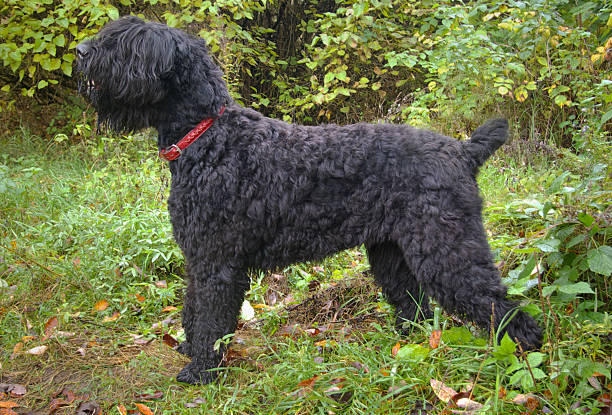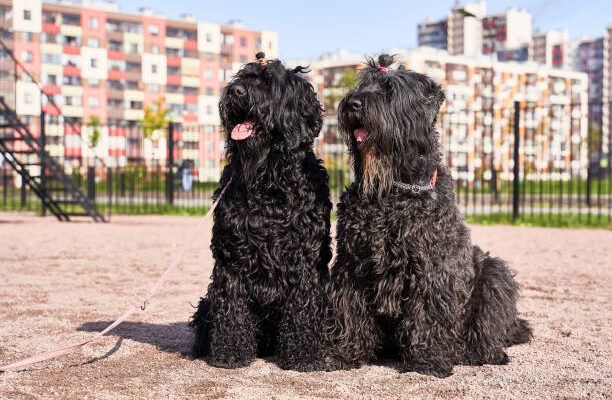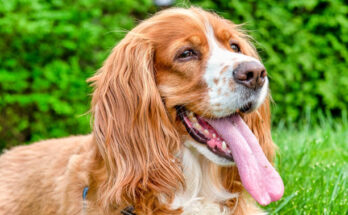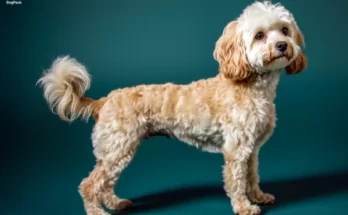The Black Russian Terrier presents itself as an imposing yet loving dog that belongs to the working group. Human breeders developed this military origin working dog through selective breeding to show all three traits of power and intelligence while maintaining unalterable loyalty to become the much-adored family guardian and companion today. The detailed guide explores the history of the Black Russian Terrier together with its bodily features and behavioral traits and training requirements and care needs and hair maintenance, and additional information, which helps you decide if this noble breed suits your family environment and day-to-day existence.
Table of Contents
Introduction to Black Russian Terriers
- Introduction to Black Russian Terriers
- History and Origin
- Physical Characteristics
- Personality and Temperament
- Training a Black Russian Terrier
- Exercise and Activity Needs
- Nutritional Requirements and Diet
- Grooming and Hygiene
- Common Health Issues and Preventive Care
- Socialization and Behavior
- Living Conditions and Adaptability
- Fun Activities and Games
- Conclusion
The Black Russian Terrier (also known commonly as BRT) exists as a noble and muscular, sizable dog that presents both protective qualities and mental acuity. The Russian breed receives its nickname “Black Pearl of Russia” because of its perfect combination of muscular traits and emotional awareness. These particular dogs do not belong to the terrier group, even though their name suggests it, and they were bred for their ability to handle diverse situations and challenges. Black Russian Terriers are most suitable for owners with experience since they need ongoing training alongside consistent activity to successfully fulfill their potential.
These dogs excel in their dual role as protector guardians, just as they do as loving family members, because their personality intertwines protective composure with their cheerful devotion.
History and Origin
Soviet-Era Development
The Soviet government created the Black Russian Terrier through breeding efforts in the last half of the 1940s and the beginning years of the 1950s. During the Soviet Red Star Kennel endeavor, they sought to breed an ultimate police and military dog which would operate in intense conditions and perform multiple duties, and maintain absolute obedience.
Breed Composition
The breeding process involved multiple purebred dogs, including Giant Schnauzer and Airedale Terrier and Rottweiler and Newfoundland, and Moscow Water Dog, which last occurred for seventeen years.
- Giant Schnauzer
- Airedale Terrier
- Rottweiler
- Newfoundland
- Moscow Water Dog
A result of selective breeding produced a big strong dog that both resisted weather conditions and gained superior mental abilities and protective nature.
Official Recognition
After its creation, the BRT gained official recognition from the Russian Kennel Federation starting in 1981, while the American Kennel Club acknowledged it in 2004. Since its official recognition in 2004, the breed has become increasingly popular worldwide because of its balanced characteristics of elegance as well as power and trainability.
Physical Characteristics

Size and Build
- Height: 26–30 inches at the shoulder
- Weight: 80–130 pounds
- Build: Sturdy, athletic, and well-proportioned
The BRT stands as an endurance-powered giant showing both its powerful robust build and self-assured posture with broad chest and strong limbs.
Coat and Color
- Coat Texture: Thick, double-layered coat with a dense undercoat and coarse outer coat
- Length: Medium to long with slight waves
- Color: Solid black (a few gray hairs may be present in adults)
Due to its dense coat insulation mechanisms, the BRT needs regular maintenance to avoid coat matting while living in cold climates.
Personality and Temperament
What Is a Black Russian Terrier Like?
A Black Russian Terrier demonstrates composure until training commences yet moves straight to protective mode at any sign of danger to their family members. Their smartness combined with bravery and self-assurance make them excellent guard dogs according to their original military role.
Family Compatibility
- Children: Gentle with respectful children
- Other Pets: May be dominant or reserved with other animals unless socialized early
- Guarding Instincts: Naturally protective, often serving as family watchdogs
Black Russian Terriers form strong emotional bonds with their families and do not tolerate long periods of isolation. They crave companionship and thrive in interactive households.
Training a Black Russian Terrier
Intelligence and Willpower
A key strength of Black Russian Terriers lies in their capability to learn easily while maintaining independence as a breed. Since they come from military backgrounds, Black Russian Terriers function optimally when placed in organized environments with leaders who maintain consistent behavior.
Essential Training Tips
- Start Early: Begin obedience and socialization during the puppy stage
- Positive Reinforcement: Use praise, play, and treats as motivation
- Short, Engaging Sessions: Prevent boredom with varied exercises
- Clear Boundaries: Consistent rules foster respect and obedience
These dogs excel in advanced training programs such as Schutzhund, obedience, rally, and tracking.
Exercise and Activity Needs
Daily Exercise Requirements
Every day Black Russian Terrier owners must provide their dogs with least ninety minutes of exercise activities because regular exercise maintains their health and defends against destructive behavior.
Recommended Activities
- Long walks or runs
- Agility or working dog sports
- Playtime in secure fenced areas
- Hiking and swimming
Mental Stimulation
BRTs are thinkers. They need challenges for their minds to maintain contentment.
- Obedience drills
- Puzzle toys and feeders
- Nose work or scent tracking games
- Task-based commands like fetching items or helping carry gear
Without proper mental and physical stimulation, these intelligent dogs may become anxious or dominant.
Nutritional Requirements and Diet
Ideal Diet for BRTs
Due to their massive size and boundless energy levels, Black Russian Terriers need a protein-heavy diet made for dogs of their large breed classification.
Recommended Foods:
- Lean animal proteins (beef, lamb, chicken, fish)
- Omega-3 sources (salmon, flaxseed)
- Complex carbs (brown rice, oatmeal, sweet potatoes)
- Veggies like spinach, carrots, and green beans
Feeding Schedule
- Puppies: 3–4 meals per day
- Adults: 2 balanced meals daily
Providing unlimited portions to Black Russian Terriers is dangerous since this breed easily becomes overweight. Fresh water supply should always be available, while you must reject both table scraps and fatty rewards when they dine.
Grooming and Hygiene
Grooming Demands
BRTs have a minimal shedding level, but they need regular grooming because of their dense coat.
Grooming Routine:
- Brushing: 3–4 times weekly to prevent matting
- Bathing: Every 4–6 weeks
- Professional Grooming: Every 6–8 weeks for trimming and shaping
- Nail Trimming: Biweekly
- Teeth Cleaning: 2–3 times per week
- Ear Cleaning: Weekly
The beard and leg furnishings on BRTs need regular care because they function as natural debris collectors with their tendency to catch food particles.
Common Health Issues and Preventive Care
Known Health Concerns
Although robust by nature, Black Russian Terriers have some inherited health issues that might occur in various forms:
- Hip and Elbow Dysplasia
- Progressive Retinal Atrophy (PRA)
- Bloat (Gastric Torsion)
- Hypothyroidism
- Allergies and Skin Conditions
Preventive Measures
- Regular veterinary checkups
- Screenings for joint and eye conditions
- A balanced diet and weight management
- Avoiding vigorous activity around mealtimes (to prevent bloat)
- Parasite prevention
Responsible breeders screen for hereditary conditions to reduce risk in puppies.
Socialization and Behavior
Socialization Tips
Early exposure is key to curbing territorial or aggressive tendencies.
- Enroll in puppy classes
- Introduce to varied environments, people, and animals
- Use calm, controlled settings for first-time meetings
- Reward relaxed behavior and confidence
Behavioral Traits
- Loyal: Devoted to their family
- Protective: Excellent watchdogs
- Calm: Balanced indoors with proper exercise
- Stubborn: Willful without consistent leadership
- Affectionate: Enjoy human companionship
Living Conditions and Adaptability
Best Environments
BRTs need abundant space outside small apartments, but they also require minimal household activity.
Ideal Homes:
- Suburban or rural homes with secure yards
- Active families or individuals with dog-handling experience
- Homes with structured schedules and daily engagement
Climate Sensitivity
- Cold: Coat offers strong protection; they thrive in colder temperatures
- Heat: Can overheat—limit outdoor activity during hot weather and always provide shade and water
Fun Activities and Games
Physical & Mental Games
The Black Russian Terrier gains fun from both physical and cognitive stimulation activities.
Game Ideas:
- Tug-of-war and fetch
- Tracking scents through backyards
- Obstacle courses
- Find-the-toy challenges
Enrichment Tools
- Puzzle feeders
- Hide-and-seek games
- Obedience tournaments
- Job-based tasks like carrying small backpacks
Keep sessions interactive and purposeful to maintain their interest and satisfaction.
Conclusion
A Black Russian Terrier exists in life beyond its canine classification. Beyond its dignified beauty the Black Russian Terrier provides trustworthy loyalty and extended friendship together with protective service. Future Black Russian Terrier owners need patience, commitment, and experience to gain this unique and formidable dog as their lifetime companion.
Key Takeaways:
Daily leadership, along with a scheduled structure, together with physical and mental stimulation, help the Black Russian Terrier prosper.
The maintenance of coat health as well as hygiene requires frequent grooming.
A healthy temperament results from both early exposure to people and continuous experiences with different situations.
BRTs mature into brave security guardians along with loving family members when members of active households adopt and care for them.
Getting a Black Russian Terrier means entering a long-term relationship that provides eternal commitment through friendship.




